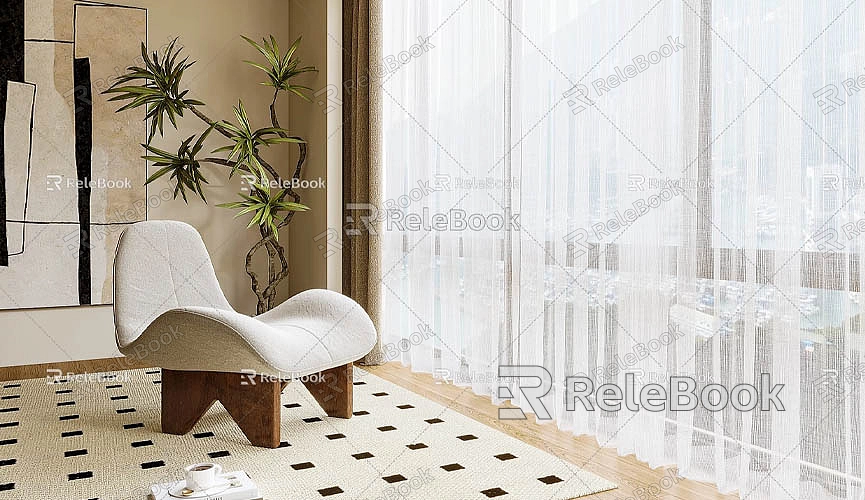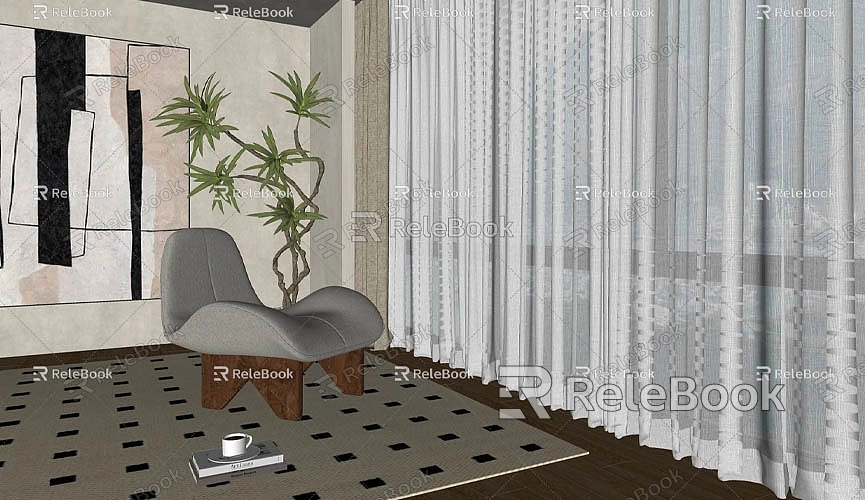How to Import a SketchUp Model into Blender
In the realm of 3D modeling and design, both SketchUp and Blender hold irreplaceable roles. SketchUp is favored by architects, interior designers, and urban planners for its user-friendly interface and powerful architectural design features. Blender, on the other hand, is a comprehensive 3D creation suite, widely used for animation, rendering, 3D modeling, and video editing. While these two software tools serve different purposes in the modeling and design process, their interoperability is crucial for many designers. Especially after importing SketchUp’s architectural models into Blender, designers can leverage Blender's powerful rendering, animation, and detailing tools to further enhance the model's visual impact and functionality.
However, directly importing SketchUp models into Blender is not a straightforward process. SketchUp uses the `.skp` file format, which Blender does not natively support, meaning the model must be exported into a format that Blender can accept, such as `.dae` (Collada), `.obj`, or `.fbx`. Issues like adjusting details during the import, reapplying materials, and converting geometry can all affect the final result.

This article will provide a detailed guide on how to import SketchUp models into Blender, along with useful tips and solutions to help designers successfully import, optimize, and refine their models.
Why Import a SketchUp Model into Blender?
While SketchUp excels in architectural design and prototyping, it has limitations when it comes to rendering, animation, and handling complex textures. Blender, as a powerful 3D creation tool, offers more room for post-processing and optimization of SketchUp models. The primary reasons for importing SketchUp models into Blender include:
1. High-Quality Rendering: Blender's rendering engines, such as Cycles and Eevee, provide exceptional image quality, especially in areas like lighting, materials, textures, shadows, and reflections, far surpassing SketchUp's built-in rendering capabilities. By importing SketchUp models into Blender, designers can achieve more realistic and detailed images.
2. Animation and Physics Simulation: Blender has a robust animation system and physics simulations (such as fluid, smoke, and cloth) that can add dynamic effects and physical interactions to SketchUp models. For example, if you need to add motion, collisions, or fluid simulations to a model, Blender is the ideal platform.
3. Complex Textures and Materials: Blender offers a more sophisticated material and texture system than SketchUp, supporting PBR (Physically Based Rendering) materials that can give models more realistic surface effects in virtual environments.
4. Visual Effects and Post-Processing: Blender is not just a 3D modeling tool; it also provides powerful VFX (visual effects) and compositing tools that allow designers to integrate SketchUp models with other elements, such as particle effects, lighting, and color grading, to create polished animations or still images.
Exporting SketchUp Models and Importing Them into Blender

Since Blender doesn’t directly support SketchUp’s `.skp` file format, you first need to export the SketchUp model to another format that Blender can recognize and import. Common export formats include `.dae` (Collada), `.obj`, and `.fbx`. Each format has slightly different export procedures, and here are the detailed steps for each.
Exporting as Collada (.dae) Format
Collada (.dae) is an open 3D model exchange format commonly used for data transfer between different software. Blender handles Collada files well, making it one of the most popular formats for importing SketchUp models into Blender.
To export as Collada from SketchUp:
1. Open the model you want to export in SketchUp.
2. Click on the “File” menu, then select “Export” and choose “3D Model.”
3. From the export file type options, select Collada (.dae).
4. During export, you can choose version settings, such as whether to retain materials, texture mapping, and other options.
After exporting, go to Blender and:
1. Click “File” > “Import” > “Collada (.dae).”
2. Select the exported `.dae` file and click “Import Collada.”
Once imported, the model will appear in Blender’s 3D view, where you can make further adjustments.
Exporting as Wavefront (.obj) Format
The `.obj` format is a widely-used 3D model format that retains good geometric information but may require manual reassignment of materials and textures.
To export as `.obj` from SketchUp:
1. Select “File” > “Export” > “3D Model.”
2. Choose “Wavefront (.obj)” as the file type.
3. Ensure you check options like “Export Textures” and “Export Materials” to preserve as much material data as possible.
After exporting, in Blender:
1. Click “File” > “Import” > “Wavefront (.obj).”
2. Blender will import the `.obj` file and create a new object based on the geometry.
If the texture files were exported along with the `.obj` file, Blender should automatically load them. In some cases, you might need to manually adjust texture paths.
Exporting as FBX (.fbx) Format
The `.fbx` format is a specialized format for storing 3D models, animations, and material data, and is commonly used for complex models and animations. If you need to import a SketchUp model with animation into Blender, `.fbx` is a good choice.
To export as `.fbx` from SketchUp:
1. Choose “File” > “Export” > “3D Model.”
2. Select the “FBX” format.
3. Ensure you select the necessary options for animations, textures, and materials.
Once exported, in Blender:
1. Click “File” > “Import” > “FBX.”
2. Blender will parse the `.fbx` file, importing all geometry, animations, skeletons, and materials.
Adjustments and Optimization After Import
After successfully importing the SketchUp model into Blender, there may be a few adjustments needed. Here are some common issues and their solutions:
1. Scale Issues
Models may appear too large or too small due to different unit systems used by SketchUp and Blender. SketchUp uses feet or meters, while Blender uses its own "Blender Units." To fix this, use Blender’s “Scale” tool (press S) to adjust the model’s size to fit Blender’s unit system.
2. Missing Materials and Textures
Because SketchUp and Blender handle materials and textures differently, some material and texture information might be lost during import. In these cases, you will need to manually reassign materials, especially when importing `.obj` or `.fbx` files. Ensure texture paths are correct, and reapply the relevant textures to the model.
3. Model Orientation Issues
The coordinate systems of SketchUp and Blender differ, which can cause orientation issues. For example, in SketchUp, the Z-axis usually represents height, while in Blender, the Z-axis is vertical. If necessary, select the model in Blender and rotate it to align with the correct orientation.
4. Complex Geometry Issues
When importing complex models, especially large architectural models with many details and components, Blender may not accurately recreate all the geometry from SketchUp. In such cases, switch to Blender’s Edit Mode to simplify or fix the model, reducing polygon counts and optimizing performance.
Further Optimization and Adjustment
Once your model is imported into Blender, you can use some advanced features to further refine it:
- Apply Transformations: In Blender, all objects have location, rotation, and scale transformations. After importing, make sure to apply these transformations (press `Ctrl + A` and choose “Apply All Transformations”) to ensure the model’s transformation data is correct.
- Simplify the Mesh: If the SketchUp model is too complex with many small faces and unnecessary details, you can use Blender’s “Decimate” modifier to simplify the mesh, improving rendering efficiency.
- Adjust Materials and Textures: Blender’s material system is much more advanced than SketchUp's, so you can take advantage of Blender’s node editor to fine-tune materials and use PBR material models for enhanced visual effects.
By following these steps and tips, you can seamlessly import SketchUp models into Blender and unlock the full potential of Blender’s powerful rendering, animation, and texturing capabilities.

